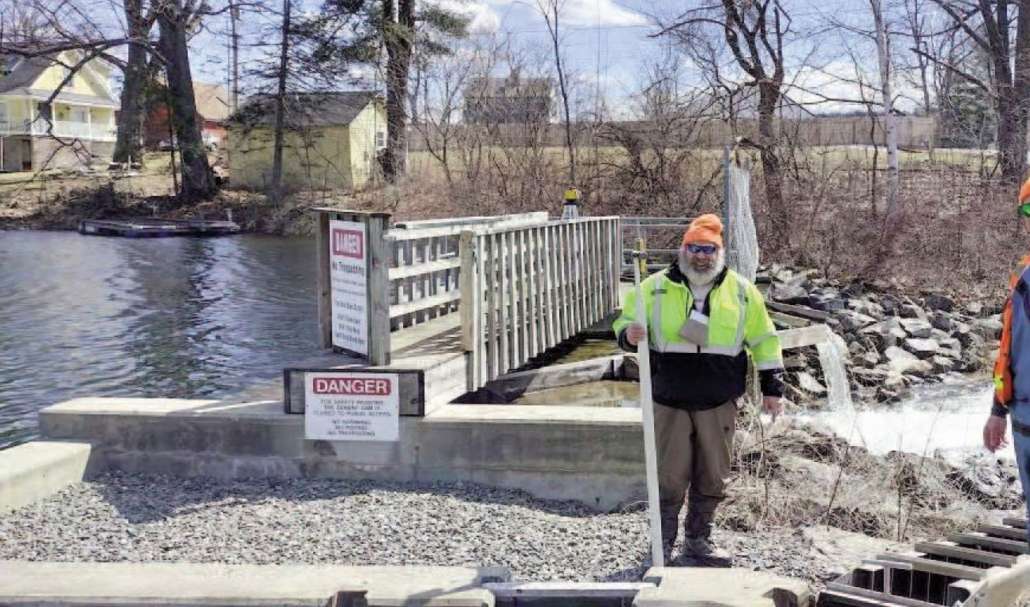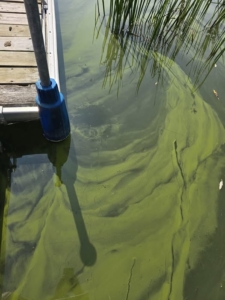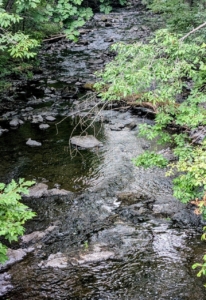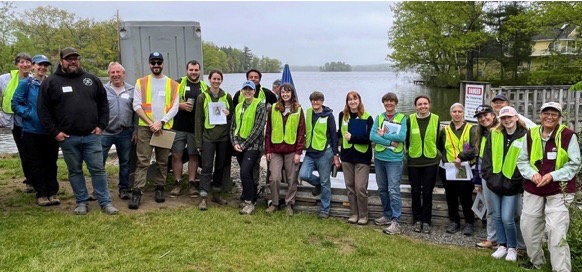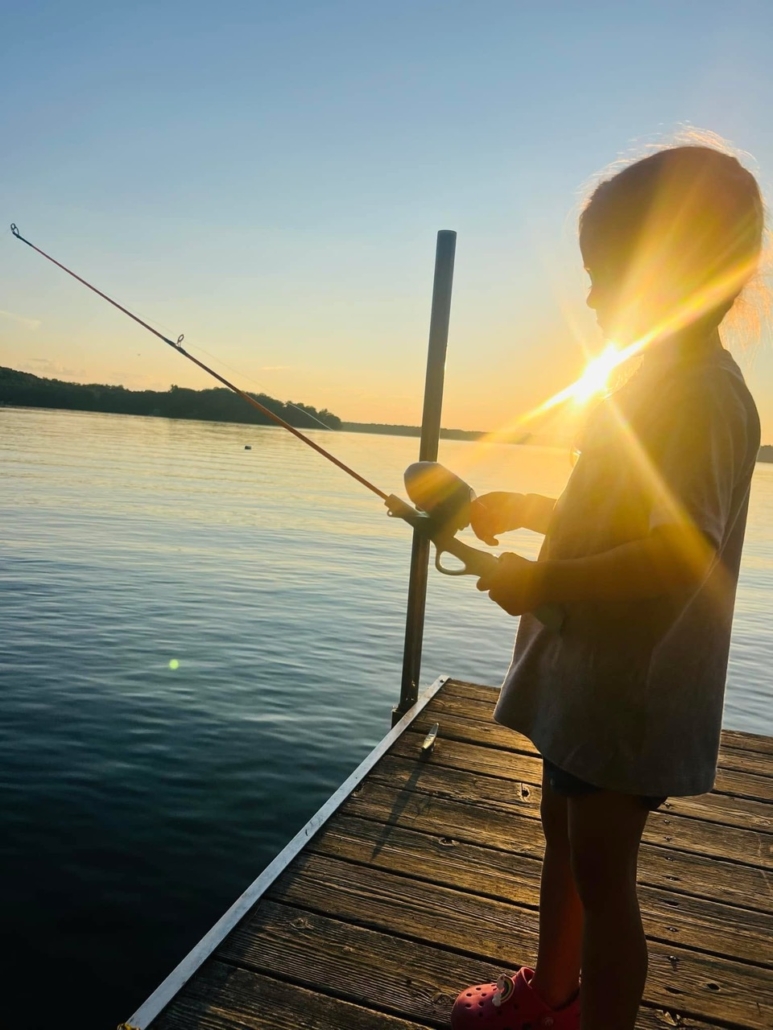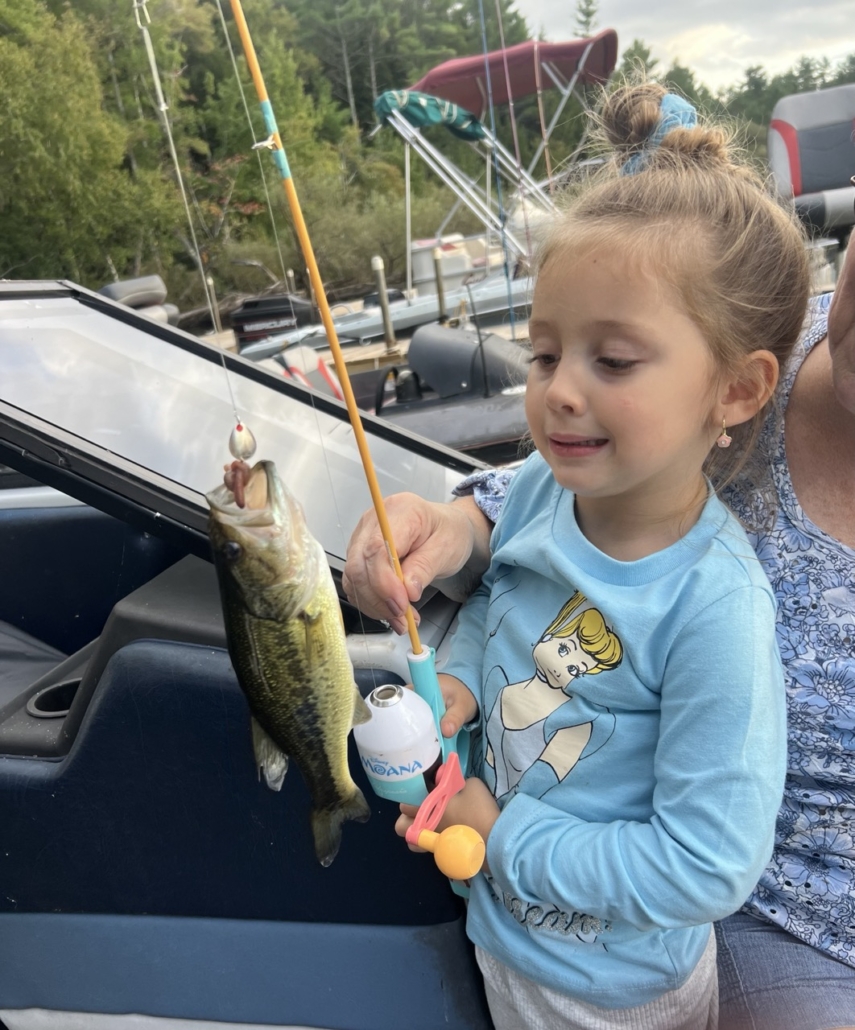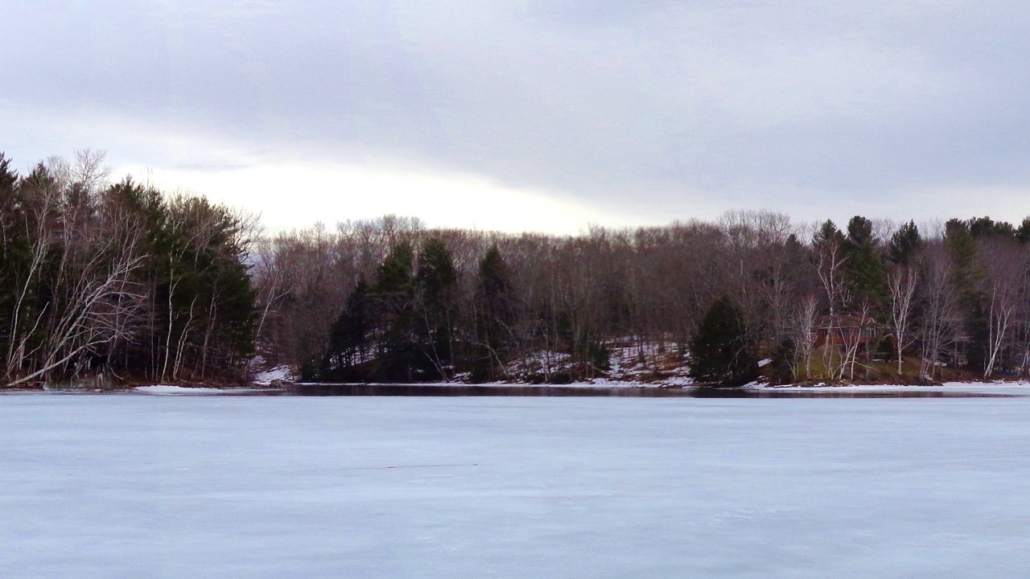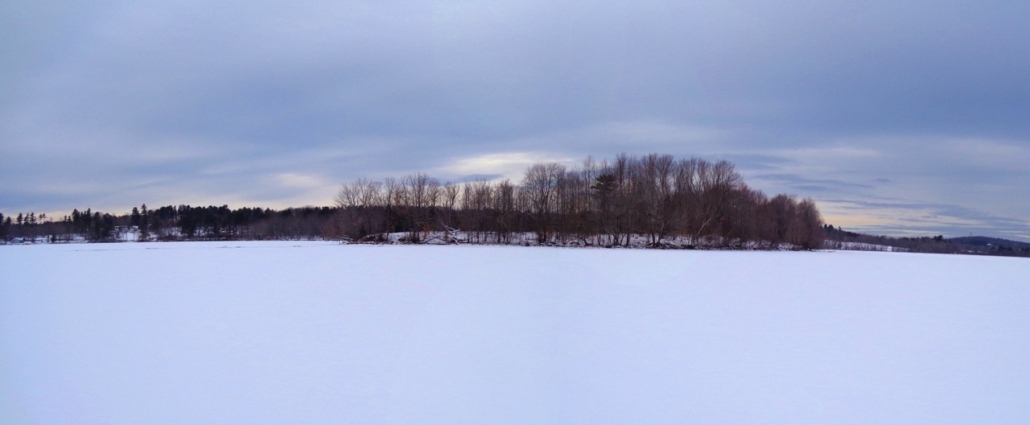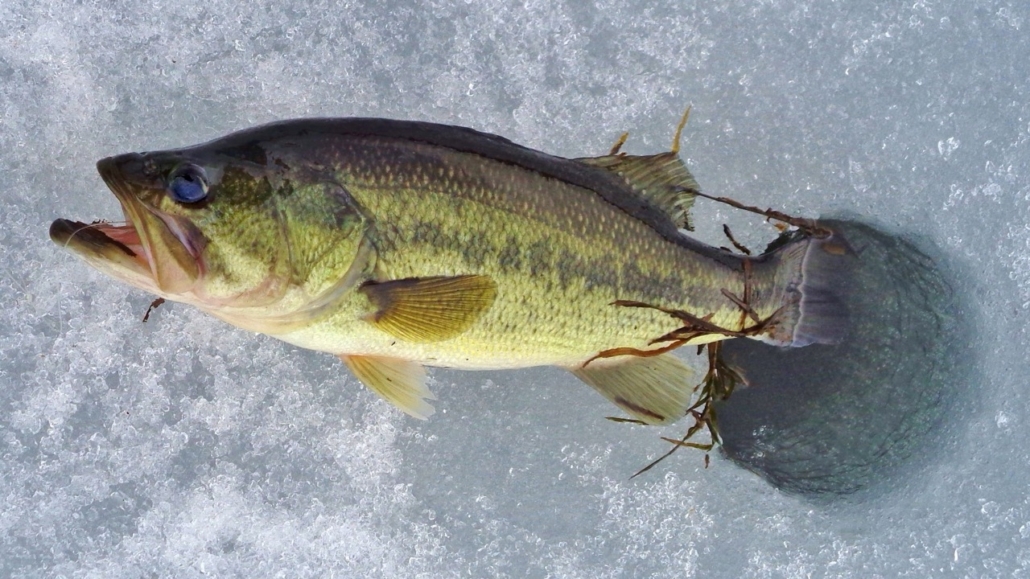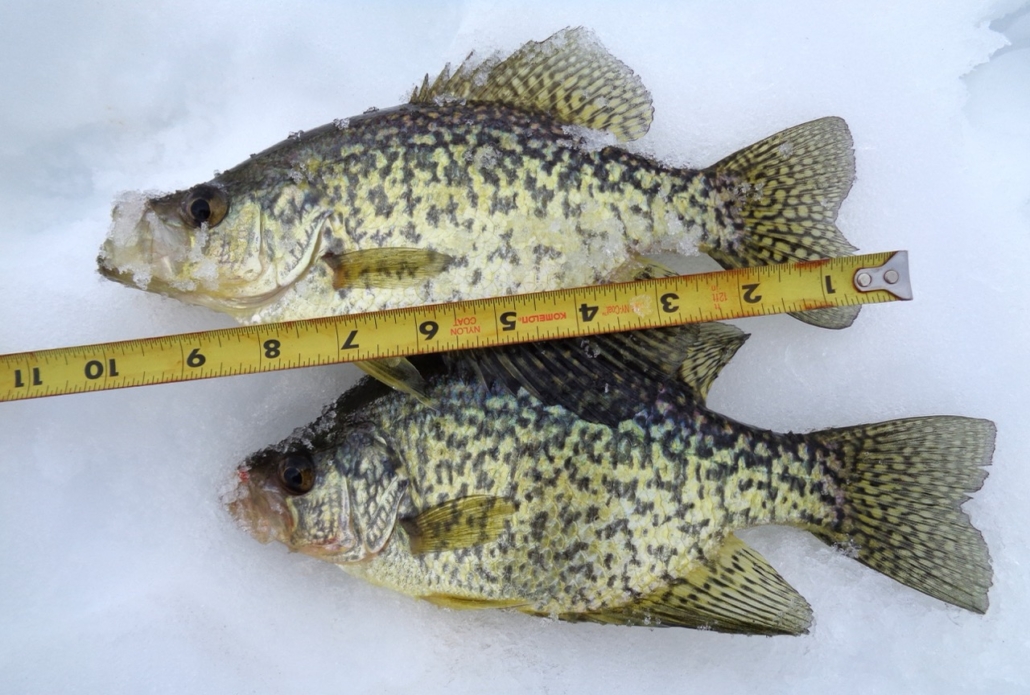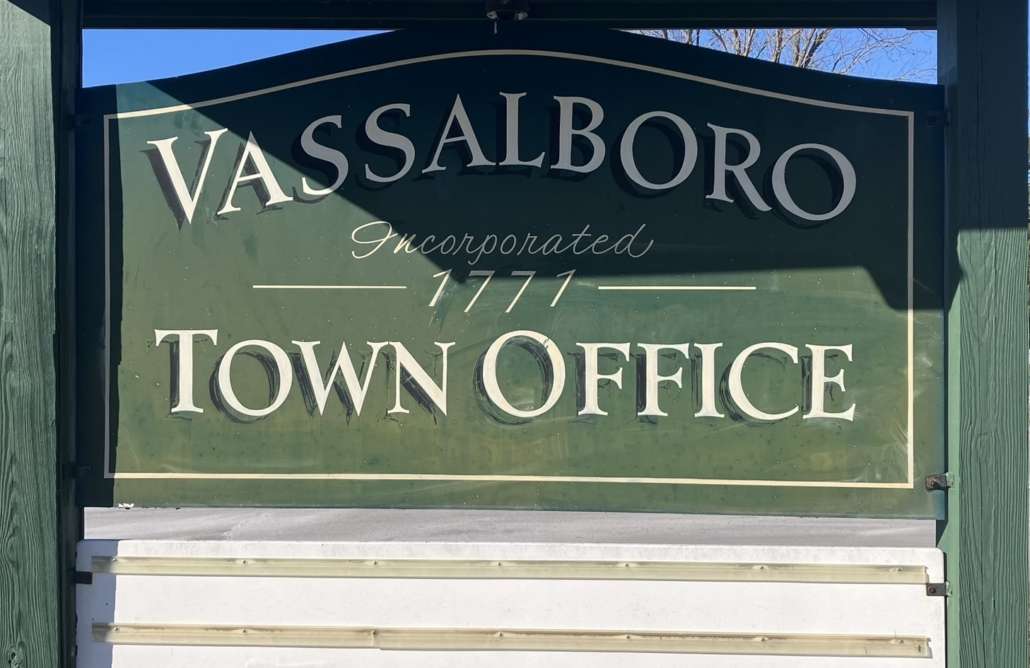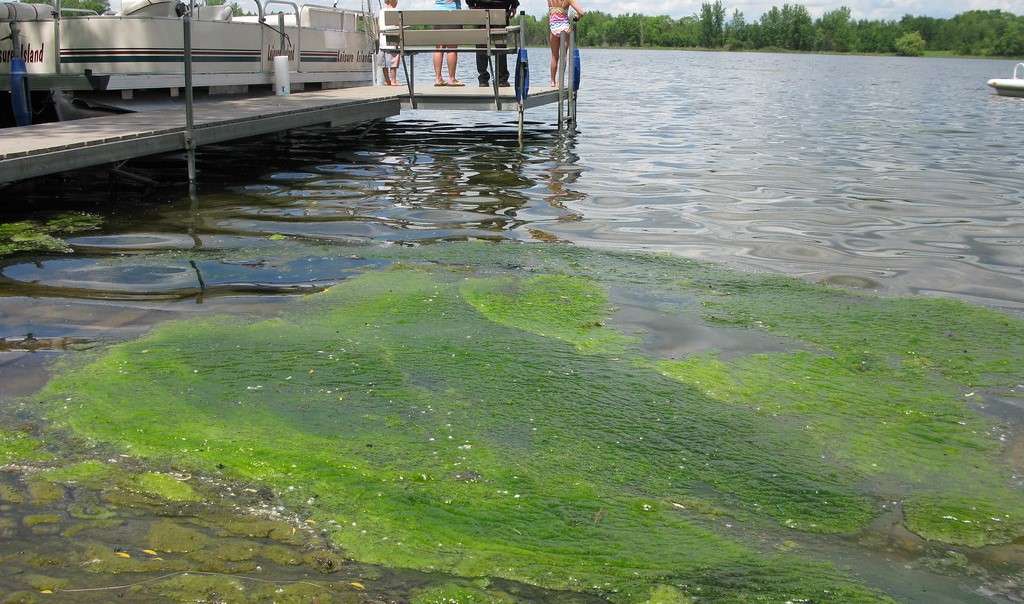Vassalboro select board members’ March 21 meeting featured a discussion with John Reuthe and Rebecca Lamey, from the Webber Pond Association (WPA), about the health of Webber Pond and associated water bodies.
The water level in the Vassalboro pond is controlled by an outlet dam. Water quality is influenced by run-off from surrounding land and, Reuthe explained, by inflows from Three Mile Pond, Three Cornered Pond and Mud Pond.
A history of water quality problems led to a management program developed by the Maine Department of Environmental Protection that includes an annual fall drawdown intended to flush excess nutrients down Seven Mile Stream into the Kennebec River.
Reuthe, WPA president, said warmer water has encouraged the growth of blue-green algae, also known as cyanobacteria, which can sicken people and pets.
WPA officers are working with Maine Rivers (the organization that led the opening of local streams to alewife migration) to develop a new watershed management plan encompassing the four connected ponds, Reuthe said. A plan written about 20 years ago, with help from the Kennebec Valley Soil and Water Conservation District, was not implemented and is outdated.
Because Three Mile Pond is partly in China and Windsor, Mud Pond is in Windsor and Three Cornered Pond is in Augusta, the effort will involve multiple municipalities. Reuthe and Vassalboro Town Manager Aaron Miller have already begun discussions with Windsor’s town manager.
Lamey said WPA will apply for a federal 604(b) grant, referring to a program that is part of the Clean Water Act, to begin the new watershed study. Vassalboro has several residents whose expertise will be helpful, including a grant-writer, she said.
Future plans include more dam improvements, Reuthe said, in cooperation with Maine Rivers. Although the projects he and Lamey outlined will be expensive, he assured select board members WPA is not –yet – asking for substantial town funds, only for expressions of support from the select board.
Reuthe told select board members the $5,000 voters allocated to the WPA at the 2023 town meeting was spent as intended, to make the dam gates easier to control and add equipment storage at the dam and to buy water quality testing equipment.
The public hearing on amendments to Vassalboro’s Marijuana Business Ordinance with which the March 21 meeting was scheduled to begin drew no audience. Board members and planning board member Douglas Phillips briefly discussed the changes, which include renaming the ordinance Cannabis Business Ordinance. The topic will be continued at the April 4 select board meeting.
Board members also postponed a decision on repaving the parking lot at the former East Vassalboro school, now the Vassalboro Historical Society headquarters. After reviewing three proposals with cost estimates, they referred board member Rick Denico, Jr.’s, questions about the project to the expertise of public works department members.
In other business March 21, select board members unanimously:
— Left the town office hours adopted in January as they are. Miller said residents who expressed opinions are pleased, especially with the earlier opening.
— Approved closing the transfer station on Easter Sunday, as has been done in past years.
Miller said he has no new information related to the Vassalboro Sanitary District’s finances. The district has a rate increase scheduled April 1 for its about 200 customers, who have told select board members they cannot afford even present rates.
Select board members have been working on the issue since before the Dec. 14, 2023, meeting which drew more than five dozen people to discuss reasons and potential remedies for the financial problems (see the Dec. 21, 2023, issue of The Town Line, p. 2).
The next regular Vassalboro select board meeting is scheduled for 6:30 p.m. Thursday, April 4.
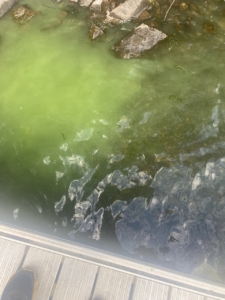 Cyanobacteria toxins at levels harmful to adults, children and pets were identified, on September 2, in water samples taken on the south shore of Webber Pond. These are the first persistent scums that have been reported this year.
Cyanobacteria toxins at levels harmful to adults, children and pets were identified, on September 2, in water samples taken on the south shore of Webber Pond. These are the first persistent scums that have been reported this year.

